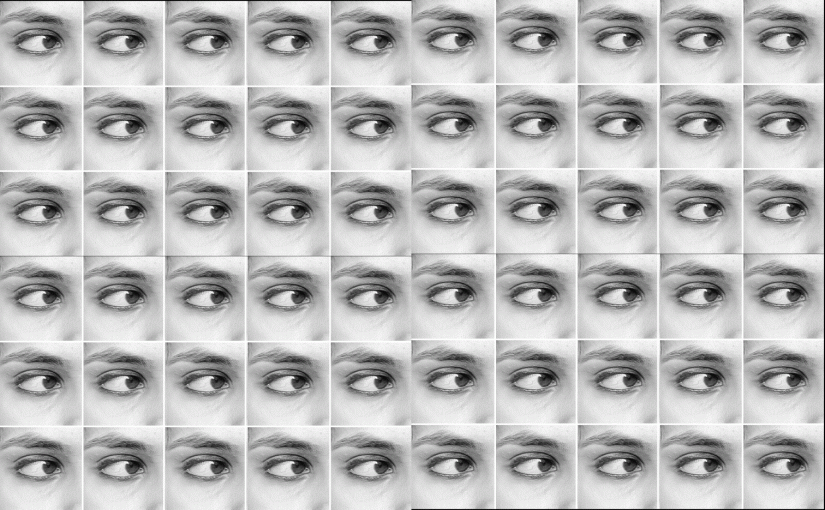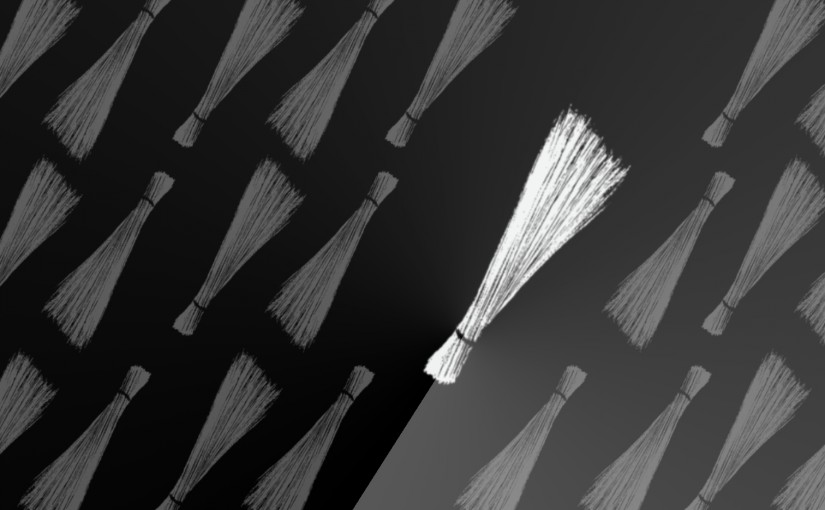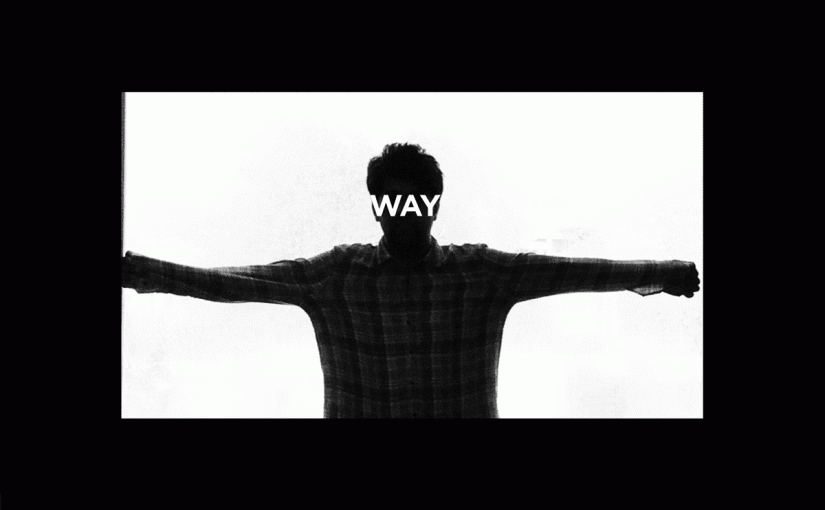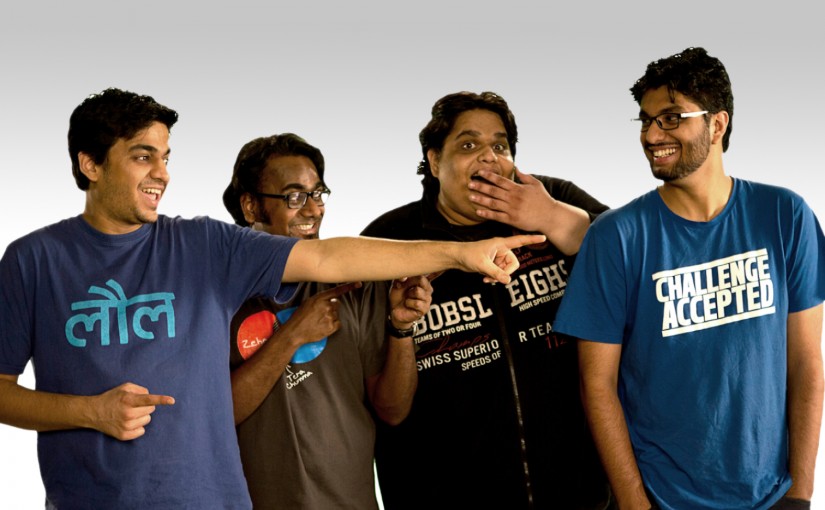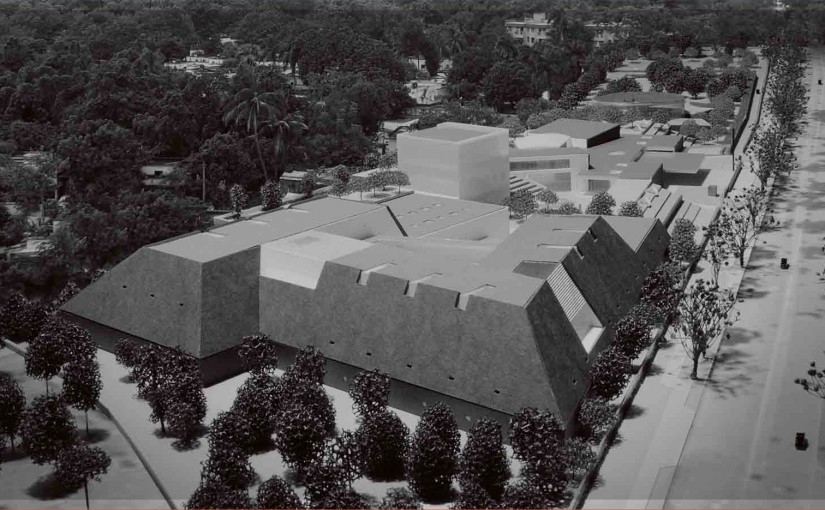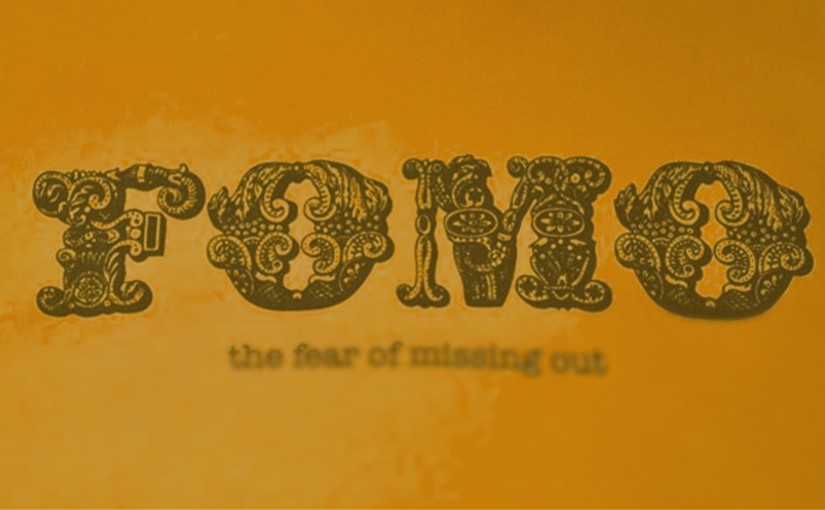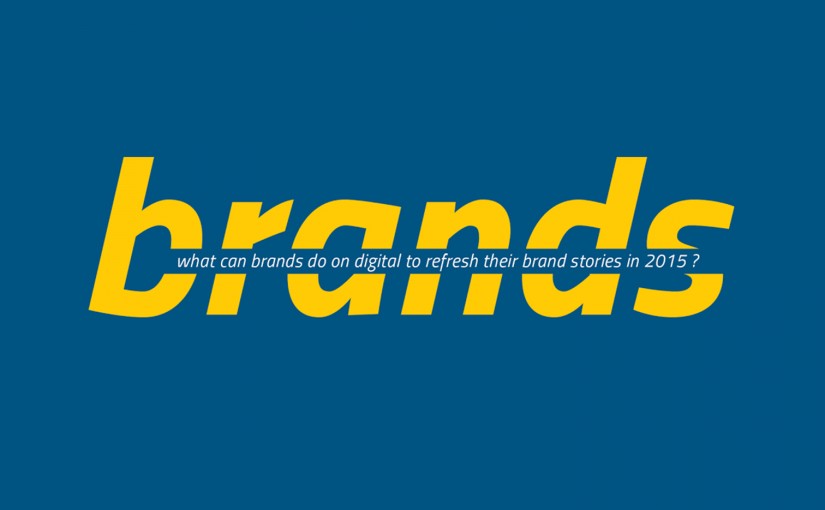Drop us a few lines about the task and we will get back immediately to see we how we can take the discussion forward. Alternately, just pick up the phone and speak with us at +91 9910034330 and we would be happy to help.
- - Do tell us a little about the nature of your business.
- - Be specific about what you’d like us to help you with.
- - Knowing your budget always helps us plan a suitable intervention.
- Blog
Blog the Talk Edition 2- Impact of Social Networks and User Generated Content – an India perspective.
-

Blog the Talk Edition 2- Impact of Social Networks and User Generated Content – an India perspective.
Blog the Talk Edition 2- Impact of Social Networks and User Generated Content – an India perspective.

Blog the Talk discussion series was conceived to feature the best of learning from the ‘live web’ through panel discussions, talks and one-on-ones – mostly conducted online.
It was to be a monthly discussion but its already been 4 months since the launch of Blogworks – between our new business discussions, talks & workshops, writing the blog; (and of course) meeting our work commitments & deadlines :), we haven’t been able to keep that promise. Do hope that the content from the discussion below will make up for the gap. We hope to be more regular though (there are a couple of discussion already in the pipeline).
Much has also changed in the last few months- just the term blogosphere has become partly redundant, it’s about Social Media or Live Web now, broader in what it covers. Social Networking and User Generated Content (UGC) have been gaining mainstream status. In view of that, it was pertinent that we discussed: Impact of Social Networks and User Generated Content – an India perspective.
How long is a week? Very long if you are talking about social media, UGC and SNS – in the days between we had the discussion below and actually took it up – Social Networking Site Minglebox has received $ 7 million funding from Sequoia Capital and YouTube has announced revenue sharing! It’s not for nothing that I call social media the fastest running animal on the planet!
Joining me today are(alphabetically):- Alok Mittal, Canaan Partners – Alok, a friend, former client 2 times over, is a Partner with Canaan – an early stage venture fund with focus on internet, technology and BPO space. A first generation entrepreneur, Alok is also a founding member of Band of Angels India – an organization comprising successful entrepreneurs looking to invest in seed stage businesses. Alok’s community blog Venturewoods attempts to bring the Indian venture community closer together. Alok is located in New Delhi.
- Amit Ranjan, Slideshare – Amit Ranjan, of whose product I am a great fan, is the co-founder & COO of Slideshare(www.slideshare.net). Amit keenly follows emerging trends in the consumer internet space in India and writes a blog called Webyantra about the Indian Web 2.0 space. Amit is located in New Delhi.
- Prerna Gupta, Yaari.com – Founder & CEO of Yaari.com – a social networking site for Indian youth. Prerna has led Yaari through rapid growth and widespread media coverage since its beta launch in October 2006. Prior to founding Yaari, Prerna was an Associate in Summit Partners’ venture capital fund in Palo Alto, CA. Prerna is an economics graduate from Stanford University and presently splits her time between India and the US.
- Yours truly moderated and I am ‘still located in New Delhi :).
- Blog the Talk Edition 2 is in association with IMPACT – The Media, Advertising and Marketing Weekly, which will, starting this week, carry the text for its readers over 2 issues. Thanks Team IMPACT.
- UPDATE– I am delighted to renew my association with HP – India (Hewlett Packard) . The Personal Systems Group – Commercial of HP India, which is responsible for business notebooks, business desktops, handheld devices and more would now be associated with Blog the Talk. Thanks HP ! :)
Hope you enjoy the talk and participate with comments and feedback:
All thoughts expressed by participants are personal opinion of respective speakers and do not represent the views of Blogworks or any other company/ organization.
Rajesh:Alok, first of all let me congratulate you and your colleagues on your new investment in iYogi! I think it’s an interesting next generation outsourcing concept.
Let me begin by asking you… networking on the net isn’t new – sites bringing friends together, dating and matrimonial and even business networking sites have been there forever; but suddenly there is a lot of buzz about user generated content (UGC), content communities, social and business networking – communities are emerging all around. What brought about the change?
Alok: Thanks. I think the move towards consumer generated content has been gradual and limited on a geographical scale and people want to contribute quick byte-sized content – a la, discussion boards etc.
Myspace extended the frontier in terms of user expression. I think You Tube is perhaps the most extensive example of this, and driven by:
(a) Broadband
(b) Focusing on content which already exists with the users in a form that can be shared.
Prerna: The idea has been around for a while but I think what really brought around the change was when a few sites, mostly well-funded, executed the idea in very clear and simple way and had effective marketing to make their sites tip.
Amit: The community aspect being mashed up with the content is what seems to be spurring the growth at this stage. As Alok said, the content already exists; people are already creating it; now the ability to share that content in a social context has added the impetus.
There are pure SNS (Social Networking Sites) sites where networking is the end and there are content oriented sites where SNS is the means and not the ends.
Rajesh: Alok, how much of this unleashing has to do with the possibilities that Google AdSense and other contextual ad options brought along? That the owner of a community had, for the first time, at least a possible option of moving away from transactions or selling display ads, which may not always be a possible option?
Alok: I think that’s an interesting survival technique and helps in that context. However, that’s too small a stream for a reasonable business, especially as you get to rich media sharing, you definitely need something more as source of revenue/capital.
Rajesh: But do you think that to some owners it has given a dream to make it big.
Alok: I doubt anyone has made big with adsense…
Rajesh:(Laughs)
Rajesh: Amit and Prerna, how much of this SNS phenomenon of real people sharing personal lives and data is to do with a sociological change of a generation that has grown up with the net and doesn’t much care about who is reading about them, their lives?
Prerna: I don’t think everyone using these sites has ‘grown up’ with the net but people are adaptable and the freedom is addicting, especially when sharing information about yourself so readily gets you widespread affirmation from peers.
Amit: Psychological and cultural reasons have certainly contributed to this trend; also the fact that Internet adds a hugely convenience dimension to everything – be it ecommerce or friendship.
The convenience of interacting with people in asynchronous mode. Synchronous and direct interaction on a one-to-one basis is great but for many a people, it’s intimidating.
Alok: Ya, I guess that’s why I leave post-it notes for my wife (smiles).
Rajesh: (Smiles).
Amit: Good one (Smiles).

Amit: Prerna, what’s your take? You run a pure SNS site.
Prerna: I definitely agree. Social networks have lowered barrier to communication, especially between single men & women and there’s also an aspect of voyeurism to it, especially in tight-knit communities (like Facebook in college).
Being able to spy on your peers and see how hot someone looks, or who is getting messaged by whom…
Rajesh: Well, I have always believed that we are all voyeurs, only we had fewer exhibitionists. Now many more of us are turning into exhibitionists- writing blogs, creating profiles and exchanging much more with each other. I think there is a clear shift.
Rajesh:Amit, communities like Orkut allow people to connect, exchange notes etc. – that’s fine but beyond that what?
You have spoken about first and second generation sites on many occasions. What kind of trends do you see emerge in the future?
Amit: Yes, it has to do with one’s interests; if I am a radio kind of a guy, then I can weave a community of interested people around my podcasts…
This is an example of communities that exist around the content; where the content is centric and the community is the surrounding environment.

Then there’s what I would call second generation – like Flickr, YouTube and our own website; and I think this trend is going to grow strong. 3D communities might be the next big thing to watch out for.
Alok: Yes, very excited about avatars and 3d worlds. It’s still clunky to use those, but they should become natural environments over time.
Amit: I think the second generation communities have an inherent grip over the users. In the future with Second Life (SL) kind of stuff, we would move into the realm of synchronous interactions; that will be one big paradigm shift.
Alok:I think SL kind of stuff is very compelling, both from user involvement perspective and monetization.
Prerna: I think there are a couple of major barriers to sites like SL becoming huge in the way Myspace is:
1. Technological – we still have a ways to go before we can make the interactions truly mimic real life interactions.
2. Psychological – these sites are fundamentally very different from SNS. They require a much bigger time investment and you have to get into this whole fantasy space, mentally. I am not convinced that it’s a mass-market play, in quite the same way…
But, I do think if we can begin creating avatars that truly allow us to represent ourselves uniquely and accurately that will be something big.
Alok: True, and perhaps something like cyworld is a route to getting there – mass, ready to go.
Rajesh: More like SIMS meets terminator, I call Second Life
Rajesh: What about niche communities like Shelfari or Last.Fm, whch are connecting people with mutual tastes?There is a clear transaction opportunity that I see owners have in strong bonding with the categories that people there are for, books and music respectively, in this case.
I believe books tell me much more about a person and have ability for deeper associations, than say music which ‘can’ be transient.
Alok: In generic terms, niche communities is all that should exist – whether they exist on generic web as independent properties, or as sub-communities on platforms like Myspace and Second Life is a different issue. I do not believe there is anything called ‘mass communities’
The web provides an opportunity to cost-effectively reach out to millions of niche communities and provide a window into the ‘market of one’.
Rajesh:I agree.
Prerna:I agree. Even a ‘pure SNS’ is really just one type of community site. It offers the ability to interact with other people whom you find attractive / interesting.
Last.fm allows you to be introduced to new music and people who share your music tastes.
Amit: Yes, those are examples of niche communities where their creators have done careful positioning of their offering/s and made it relevant to a specific group; and that’s the way to go; simply because that’s how the Internet works; content will become so huge and all pervasive that you will have to create filters… and filters in this case are niche sites.
Rajesh: Alok, there are contrary views about the relevance of communities in the India perspective http://www.venturewoods.org/index.php/2007/04/24/rebuttal-social-networking-a-waste-of-time-in-India/#comments.
Alok: So there was this whole ‘cultural side’ of the discussion that I don’t quite agree with. I think what’s holding it back is infrastructure, and hence some ‘specific purpose’ networks might generate higher initial interest. I think Indians have as much; if not more, desire to go explore the world, connect with friends…
I think in a 3-5 year time frame, general purpose SNS will be a mass reality in India. I would expect to see the first career social network to start gaining momentum in next 12-18 months.
So from our perspective, both those are definitely investible spaces – perhaps with different time horizons.
Rajesh: On Venturewoods, you recently said “The Indian e-recruitment technology is 10 years old – no, there are no company wars here! I mean this across the board-Global sites like LinkedIn, Simplyhired, Jobster and so on… have demonstrated how social networking can be tied into recruiting very effectively. The Indian model is going to be different from these, and I believe there is a significant market there.”

What is the Indian model likely to be?
Alok: I think it’s a mix of LinkedIn and Jobster (passive and active hiring network); I think it will be more intrusive that either of those (Indians want good jobs real bad); and I think it will be some mix of consumer ownership between the companies and the SN provider (rather than pure media model of LinkedIn).
Again, opportunities for mobile integration are high; opportunities for an overlay incentive network are high. I still do not think it will get to ‘senior level hiring’ in the short term, more likely to be junior-mid levels.
It will be interesting to see someone experiment around hiring networks combined with content bias.
Amit: I agree with Alok.
Rajesh: Amit, what do you think about C-to-C sites like Craigslist or We-exchange will they succeed in India? This is linked partly to my previous question, one of the categories that Craigslist charges for, is recruitments.
Amit:They could work, but not like Craigslist. The Indian market is already too fragmented in the beginning itself with everyone trying to replicate Craigslist. Maybe you will have 2-3 sites that get critical mass instead of one Craigslist
Though monetization will not be easy.
Alok: I don’t see any of the existing sites taking up that slot. Craigslist is a social phenomenon, not a website. People have tried to replicate the website, and I haven’t heard good understanding of replicating the social aspect of it…
Rajesh: True.
Prerna:I actually think one of the social networks that get big in India will be well positioned to do Craigslist. It’s a natural corollary.
Alok: I think SNS are better off in India on that dimension.
Rajesh: Agreed. Will we see a lot of UGC out of India though? Not consumption, actual creation – text, pics, audio, video…
Alok: It’s all a matter of timing; the infrastructure is still insufficient… Twitter, sure!
Rajesh:Prerna, you have a take on how does one bring in a strong community element on a mobile platform. What do you see happening?
Any thoughts on how Yaari.com could replicate a Twitter?.
Prerna: First, it’s important to keep it simple. SMS is the way to go, just as Twitter has done.
We do have Twitter type functionality already, and I’m sure as our visibility increases, you’ll see a similar type of usage. Our focus has always been to integrate SMS with social networking but the online part is still a critical component of what we’re doing.
Rajesh: Yes, I remember your presentation at MoMo in Delhi.
Prerna: (Smiles).
Rajesh: “Why create India models in every category when there are popular global sites…”(Avnish Bajaj, Matrix Partners at Venturewoods).
What could be that “India Filter” that Avnish and many others have spoken about?
Prerna: We should stop thinking of social networking as one specific type of website that can only be done in one specific way. Social networking is a way to organize information. It is a new type of media.
Rajesh:India has a unique flavour in many ways.
Prerna:Yes, in the same way that there is an Elle India, rather than just Elle, there will be a social network for India.
Prerna: Probably more than one.
Alok: I think there will have to be more localization that just branding. I already outlined some of the ways that might be useful on career social networking. I think the mobile piece adds its own dimension – the emphasis on SMS rather than data/download; local relationships with operators (there are no global short codes); community buzz…
Amit: I think the Indian versions are definitely possible but one has to be careful with its design, the content integrity before that can be achieved; social networking is a huge thing and it is foolhardy to think that there is space for only one person at the top.
Something that I find very interesting in India is the trend of big media companies with ubiquitous reach getting into the online space pretty early- think of NDTV, CNN-IBN, Reliance.
The 40 million Internet users that we talk of right now is just the beginning; with the mass reach of the TV networks, they could get millions of first timers into the Internet fold.
Rajesh:Any India favorites… all? (Smile)
Prerna: Yaari.com (smiles)
Alok:I like what reliance has done with Zapak, good applications drive adoption…
Entrepreneurs are likely to create those applications.
Prerna: I agree with Alok, you can’t just beat people over the head with marketing. They may come to your site once or twice but you’ll need a good product to keep traffic up.
Rajesh:True.
YouTube recently announced plans to pay money to those who upload – I think it will
a- Induce users to put meaningful stuff.
b- Other users would therefore be able to find more interesting stuff and not crap.
c- Even commercial producers can create a revenue stream.
Do you see that happen across? Owners sharing wealth with users, for content?
Alok: I think this will go the way loyalty programs have gone -out there, but really not meaningful. You want genuine buzz, desire to participate.
Otherwise, you get Amway – not bad, but not the same as the Harley Davidson Club.
Amit:I’m not sure how this model is going to work; and even if it works out, I don’t think this model is easily replicable by others. You need to have a solid backing before you can roll out something of this nature, Google has that but not others, specially the smaller players.
Rajesh: What impact do you think it UGC will have on mainstream/ traditional media? Already some of the top media in the world is based on UGC. I can see signs of mainstream media bringing about change.
Alok:It’s the same thing you mentioned earlier, platforms allow multiple communities, multiple points of views to coexist. Media has gone very unipolar, and hence lost its credibility and most part of user interest.
Prerna: That’s true…but traditional media still has huge reach.
Alok:Reality TV is one way in which producers are rediscovering user engagement; but technology is getting only so far – may be IPTV is the nirvana, let’s see.
Alok: The operative word there is ‘still’. It’s a matter of time.
Prerna:Yup, agreed, but still a ways to. Being famous on TV still means more than being famous on You Tube.
Rajesh: Vanity coverage someone said to me the other day…
Rajesh: Media today is about reach in a large part and they are making, half hearted attempts to embrace UGC maybe because they many just aren’t aware of how to go about doing it.
Alok:…and then you look at the Internet savvy demographics, and that is a very valuable set, and Internet is beating traditional media hollow within in- and advertisers know that…
Prerna: Agreed and that’s of course what all the Web 2.0 entrepreneurs are banking on…
Amit: I think traditional media has always been powerful but there is clearly a shift happening; Consider my own example – my reading habits have changed so drastically; I spend 50% less time than I earlier did on reading newspapers and books; instead I spend that time reading blogs, online magazines etc.
So if it’s happening to me, it’s happening to others as well; currently my own example may be a slightly skewed one, but this will spread.
Rajesh: Prerna, in your opinion, how much are these communities, UGC impacting purchase decisions that the customer is making today? In India?
Prerna:In the US, I’m sure communities like Facebook are having a meaningful impact on consumer purchases. Some of the leading sites have done an excellent job integrating ads into their networks…
…and, given that kids are spending hours a day looking at these sites, I’m sure the ads are effective.
I can myself recall ads on Facebook, like the Victoria’s Secret ad, which have caught my attention and most likely had some subconscious impact on my purchasing decisions.
In India, however, I don’t think community sites are having much impact on purchasing decisions, because the sites being used by most Indians are not Indian sites.
A Victoria’s Secret ad on Facebook isn’t really pertinent for an 18 year old guy in Delhi (although I’m sure he enjoys looking at the ad)…
Rajesh: Smile.
Prerna:… this is why I believe that when an Indian social networking site does gain prominence in India, it will offer a very attractive platform for advertisers.

Rajesh:But they are being used for research (let me extend that to social media).
Alok: Some yes, but there is significant lag on part of marketers.
Rajesh: Agree, it’s totally missing and most aren’t even tracking, leave alone participate. We created a model recently – layers of influence in purchase.

Alok: That’s another reason why specific purpose networks might happen sooner – employers understand referral based hiring and are willing to pay today.
Rajesh:But on the other hand some have invested into communities of their own. Communities take investment and time, bar the initial successes, do you think they will be able to sustain and justify ROI?
Prerna:No! I think it is silly. Informational sites I can see (e.g., hair tips from sunsilk), but the community aspect really doesn’t make sense to me.
Alok: I don’t know if brands have the skills to be media owners over period of time… they have the skills to use media for engagement and outreach.
Amit: No, I don’t think this will justify ROI; and my background in marketing tells me that there is more to it why these sites are created…
Alok: Ouch! Amit, hold on – don’t spill the beans here now (winks)
Rajesh: Lol, go on, go on…
Amit: I think these sites are being pushed by the ad agencies rather than the brand teams themselves; you see, there is the relationship between the corporate brand teams and their advertising agencies, and the typical dynamics that exists between them; sometimes the agencies push for things that showcase their own skills in newer areas (online media & interactive design, in this case). That’s my hunch, though I may be wrong.
Rajesh: I think starting out is an easy, fairly painless process but disengagement can have serious fallout and I think many will be forced to rethink… soon.
Rajesh: You know we found great value for a marketer participating in a neutral community instead – all brands get discussed on a community – there is intelligence to be gathered there.

Rajesh: Once the owner has created a platform, what’s the role? How do they guide the growth and success of that community?
Prerna: The role of the creator never ends, while the site is driven by user-generated content, the site’s creator must ensure that the content is displayed in an effective, clear and usable manner.
Also, as usage grows, it becomes increasingly challenging to keep the site fast, which is critically important and of course you have to stay engaged with your users to make sure someone else doesn’t come in and steal them away…
Amit: Prerna is right. The creator has a never ending role…
Rajesh : So what are the makings of a successful community? Those key ingredients – bullet points if you like:
Prerna:
1. Understand your user.
2. Offer a simple, targeted product.
Amit:
1. Solve a problem that the user is facing.
2. Blend the solution with the socializing in a seamless way.
Rajesh:This one is from my friend Toby – how do these marketers intend to track CMG? Will they monitor the conversations and how?
Amit: That’s a tough one; one could create discussions and forums and see the conversations going on there; but as the community scales this will be tough.
Rajesh: It is crucial though :).

Rajesh: Amit and Prerna – What are your plans, going forward?
Amit:We don’t have India specific plans per se; in general we have a particular kind on content (slideshows, presentations) we are looking to extend multimedia capabilities so as to engage and involve the user more.
Prerna: Our plans, on a broad scale, are what they’ve always been — to build a mobile-enabled community site for Indian youth. Our focus right now is to grow our user-base and improve our existing product based on feedback.
Rajesh:Alok, to finish off, am sure our readers would be interested in knowing, which models do you see likely getting funding, going forward (smiles).
Alok: There is a media side of the whole thing, where reach and engagement levels are the key. Then there is the transactional business model which takes it to a new level. I see scope for both…

Again, platforms are more valuable, but it’s hard to build good platforms that can compete with specific purpose deep sites.
Rajesh: So with that tip from Alok, we seed Blog the Talk – Edition 2 for our readers to take forward. The conversation has just begun; do take it forward with you inputs and insights…
Alok, Prerna, Amit, let me say thanks to all of you once again for starting this. Cheers.
Hi all, do participate and carry this conversation forward.
– Hungry for more? Read Part 1 of Blog the Talk – Impact of Blogs & Social Media on Business & Marketing in India.
PDF files of Impact’s coverage of Edition 2, Part 1 and Part 2 are here.Disclaimer: Views of authors are personal and do not represent the views of Blogworks, or any of its clients.
-
Contact
conversations@blogworks.in
+91-9910034330 -
Newsletter
-
Social









